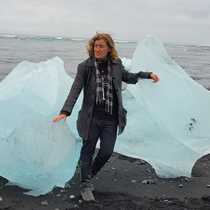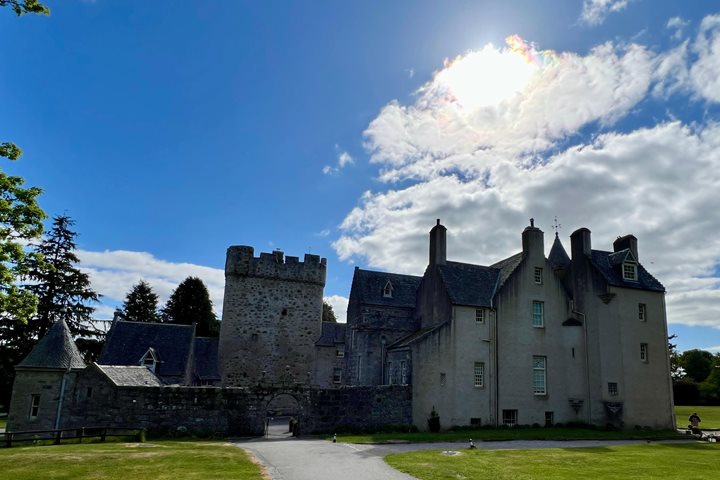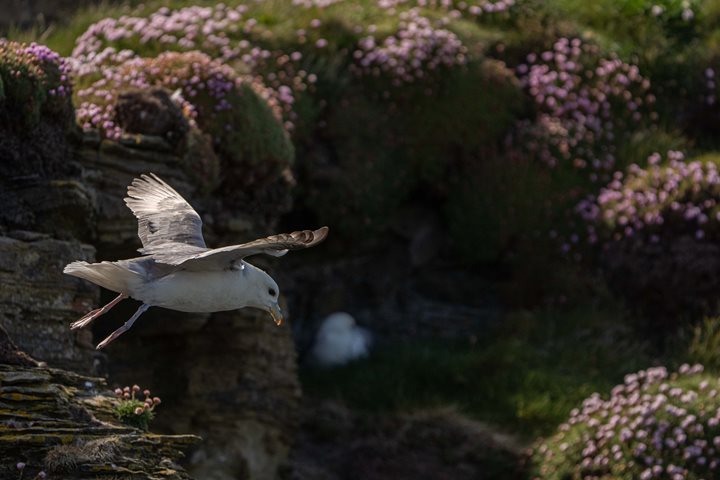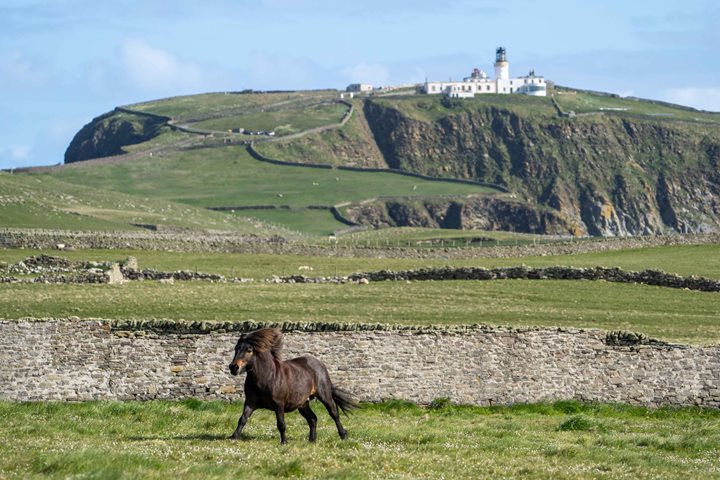The shore came into view gradually as we approached the harbour of Killybegs, the port town of County Donegal. The grass was bright beneath a threatening sky, and against the blue of the water, the wind skimmed in whitecaps. While the weather had held up until now, we wondered whether this would be the day that the west coast of Ireland showed a more ferocious side.
Nevertheless, a group of bold hikers set off in the direction of St. Colmcille’s Well, while others embarked in the direction of archaeological remains from the Iron Age or Studio Donegal Woolen Mill. The morning’s activities brought us into the heart of County Donegal through a landmark named for a medieval saint, ancient ruins dating back thousands of years, and traditional handicrafts that have been passed down from one generation to the next and continue to live in the hands of weavers today. Still, the sky held off its promised deluge, and the clement weather continued a few hours longer. The view from the lookout point was dramatic, and for a moment, it seemed the sort of day on which the legendary island of Hy-Brasil might be glimpsed far off in the distance.
Little time was to be had for lingering ashore, as the ship set off in the afternoon for Iona, following St. Colmcille’s trail all the way to his abbey. There were two lectures during this time, one by Steve Morello on the subject of photographing people and the second by Jim Wilson about the history of Ireland’s wildlife and how it reached the island over the course of the most recent Ice Age and beyond.
Each day on this voyage has brought surprises and fascinating opportunities to learn something unexpected. As singer Maighread Ni Dhomhnaill fills the lounge with music tonight, there is a sense of wonder and curiosity for what has been here over previous centuries, and indeed millennia, and what may be awaiting tomorrow.







